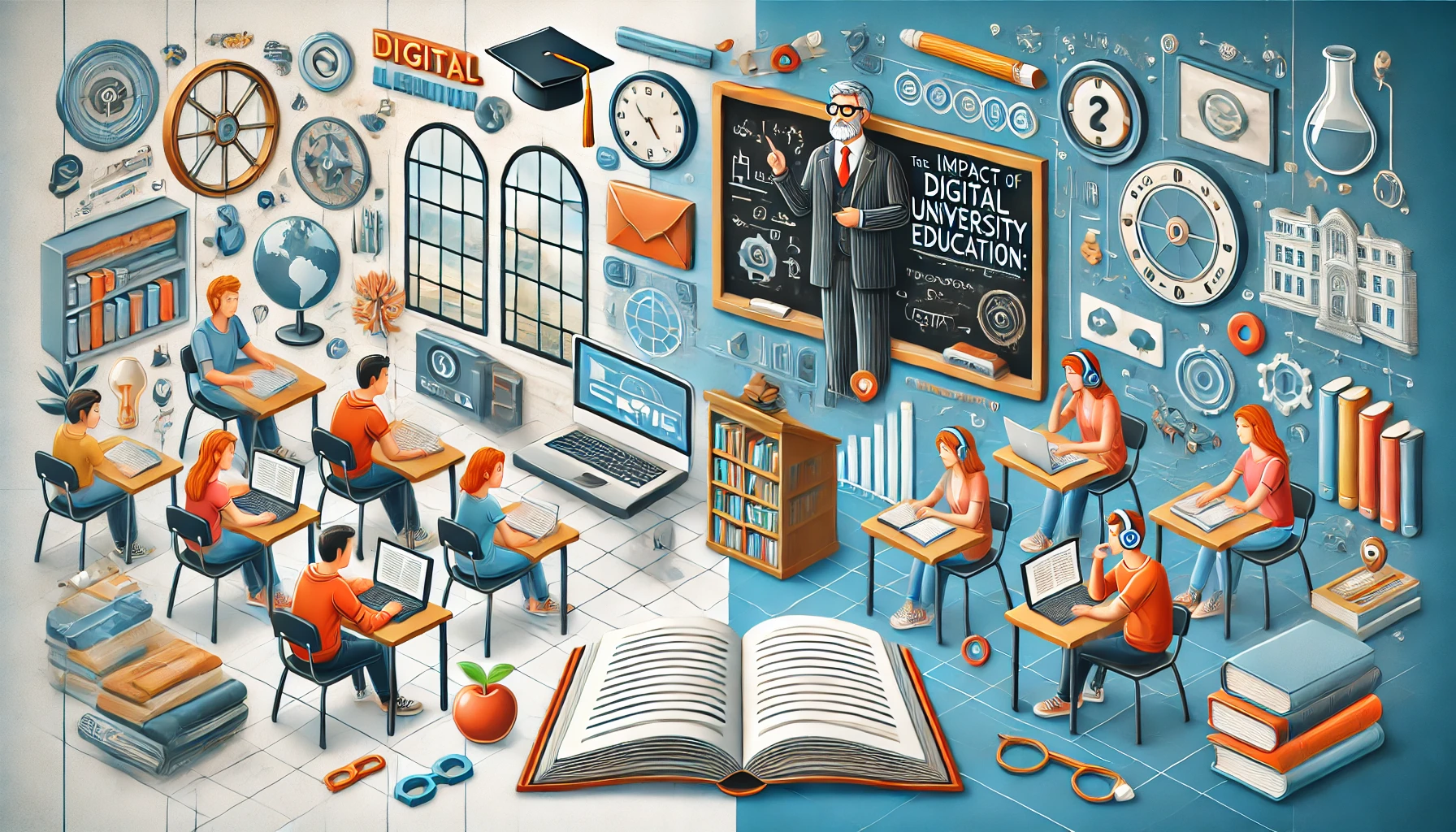The rise of digital learning has significantly transformed the landscape of education, particularly at the university level. As technology continues to evolve, universities face both challenges and opportunities in adapting traditional education models to incorporate digital tools, online courses, and hybrid learning environments. The shift towards digital learning has accelerated in recent years, especially with the advent of the COVID-19 pandemic, which forced many educational institutions worldwide to transition to online learning. However, as digital learning continues to grow, it raises important questions about its effects on the future of traditional university education.
Challenges of Digital Learning for Traditional Universities
- Digital Divide and Access: One of the most significant challenges of digital learning is the digital divide—the gap between those with access to modern technology and those without. Many students, particularly in rural areas or underdeveloped countries, may not have reliable access to high-speed internet, laptops, or other essential tools for effective online learning. This divide can create inequality in educational opportunities, with some students unable to participate in online courses or access digital resources.
- Quality Control and Accreditation: As universities move towards digital platforms, ensuring the quality of online education becomes increasingly important. Unlike traditional classrooms where teaching quality can be more easily monitored, online courses may suffer from inconsistent delivery methods, varying levels of instructor engagement, and challenges in assessing student learning outcomes. Accrediting agencies are still grappling with how to effectively assess online education, and some students may be skeptical about the value of an online degree compared to a traditional one.
- Engagement and Motivation: One of the biggest criticisms of digital learning is the lack of personal interaction, which can affect student engagement and motivation. Traditional universities provide students with face-to-face interactions with professors and peers, fostering collaboration, communication, and a sense of community. Digital learning, while offering flexibility, can lead to a sense of isolation, with students struggling to remain motivated and engaged in virtual classrooms.
- Technological Dependence and Distractions: The reliance on technology for learning can also present challenges. Technical issues, such as poor connectivity or malfunctioning software, can disrupt the learning experience. Additionally, students may face greater temptations for distraction in a home environment, leading to a decline in academic performance.
Opportunities in Digital Learning
- Increased Accessibility and Flexibility: One of the greatest advantages of digital learning is its ability to provide greater access to education. Online platforms can reach students across the globe, allowing individuals in remote areas or with disabilities to participate in university-level education that may not have been previously available to them. The flexibility of online learning allows students to study at their own pace, making education more accessible to those with work or family commitments.
- Cost-Effectiveness: Digital learning can also help reduce the costs associated with traditional education. Students can access digital resources, lectures, and course materials without the need to commute to campus or purchase expensive textbooks. For universities, online courses can help reduce operational costs such as infrastructure, facility maintenance, and administrative expenses.
- Innovation in Teaching Methods: The use of technology in education allows universities to embrace innovative teaching methods. Virtual classrooms, gamification, and interactive multimedia content can enhance the learning experience and cater to different learning styles. For example, simulations, virtual labs, and augmented reality (AR) offer students immersive learning experiences that were not possible in traditional classroom settings. Such tools enable more hands-on, experiential learning that could be a game-changer for various fields of study.
- Global Learning Communities: Digital learning allows universities to create global communities of learners. Students from different parts of the world can collaborate, share ideas, and benefit from diverse perspectives, enriching their educational experience. The ability to connect with peers and instructors worldwide can enhance cultural awareness and prepare students for the global workforce.
- Lifelong Learning and Skill Development: Digital platforms offer the possibility for lifelong learning, allowing individuals to acquire new skills and knowledge at any point in their careers. This is particularly important in today’s rapidly changing job market, where continuous learning is essential. Online courses, certifications, and micro-credentials enable professionals to stay updated on industry trends and advance their careers without having to commit to a full-time degree program.
Moving Forward: Integration of Digital Learning with Traditional Education
The future of university education likely lies in the integration of both traditional and digital learning methods. Blended learning models, which combine face-to-face instruction with online learning, offer a promising solution. This hybrid approach allows universities to retain the benefits of in-person education while leveraging the flexibility and accessibility of online platforms.
Moreover, universities should focus on upgrading their digital infrastructure, training faculty to deliver high-quality online instruction, and ensuring that students have access to the necessary technology. By fostering a balance between the traditional and digital aspects of education, universities can enhance the learning experience and better prepare students for the demands of the modern world.
In conclusion, while digital learning presents challenges for traditional university education, it also offers vast opportunities to enhance accessibility, flexibility, and innovation. The key will be finding ways to integrate digital learning into the traditional educational framework in a way that maximizes its potential while addressing its limitations. The future of university education is undoubtedly digital, but it will be most successful when complemented by the best aspects of traditional learning.
